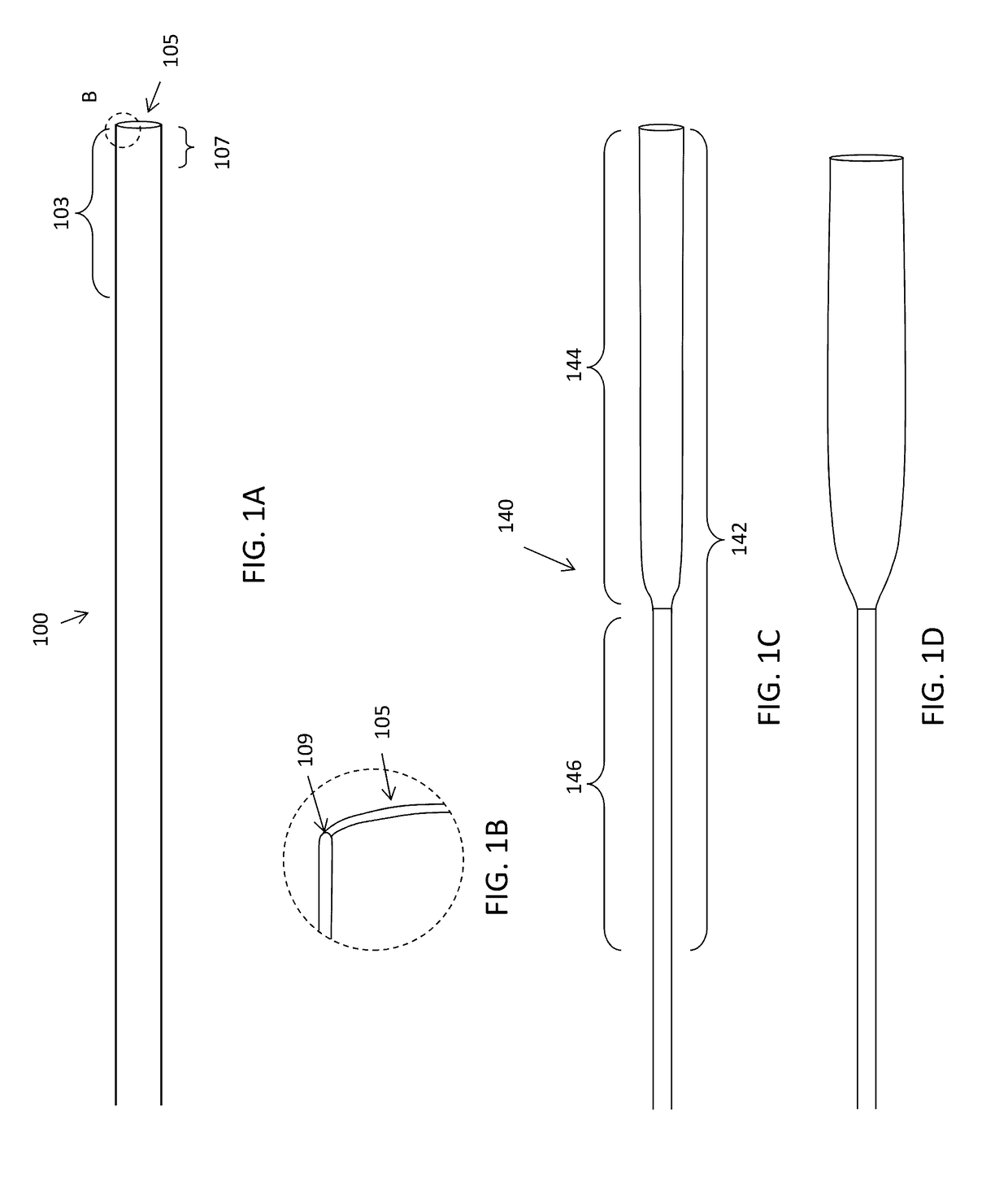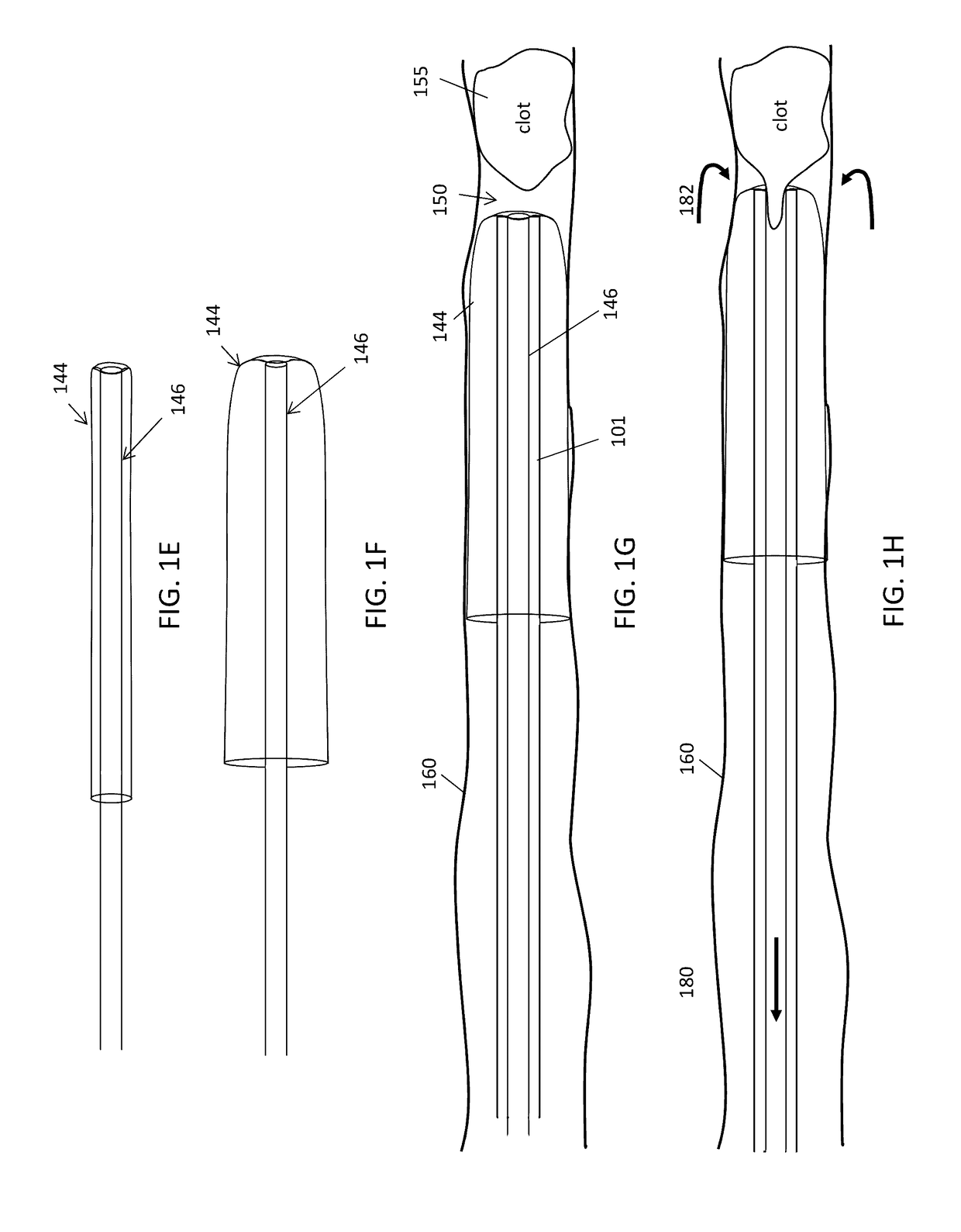Mechanical thrombectomy apparatuses and methods
a thrombosis and mechanical technology, applied in the field of mechanical thrombosis apparatuses and methods, can solve the problems of insufficient or irregular blood flow, so as to prevent collapse/buckling of the catheter, prevent the collapse of the catheter, and minimize the force
- Summary
- Abstract
- Description
- Claims
- Application Information
AI Technical Summary
Benefits of technology
Problems solved by technology
Method used
Image
Examples
Embodiment Construction
[0115]In general, described herein are methods and apparatuses for mechanically removing objects from a body. Although these methods and apparatuses may be adapted for use to remove a variety of objects from a variety of regions of the body, they may be particularly well suited for removal of blood clots from within a lumen of a blood vessel. Thus described herein are mechanical thrombectomy apparatuses (e.g., device and systems).
[0116]The apparatuses described herein (e.g., mechanical thrombectomy apparatus for removing a clot from a vessel) may be assemblies including an elongate catheter having a distal end and a distal end opening, and a flexible tractor assembly at least partially within the catheter, where the distal end region of the tractor assembly is configured as a distal tractor region that at least partially extends within the catheter and doubles back over the distal end of the catheter. The tractor assembly may include a proximate pusher region which is connected to t...
PUM
 Login to View More
Login to View More Abstract
Description
Claims
Application Information
 Login to View More
Login to View More - R&D
- Intellectual Property
- Life Sciences
- Materials
- Tech Scout
- Unparalleled Data Quality
- Higher Quality Content
- 60% Fewer Hallucinations
Browse by: Latest US Patents, China's latest patents, Technical Efficacy Thesaurus, Application Domain, Technology Topic, Popular Technical Reports.
© 2025 PatSnap. All rights reserved.Legal|Privacy policy|Modern Slavery Act Transparency Statement|Sitemap|About US| Contact US: help@patsnap.com



